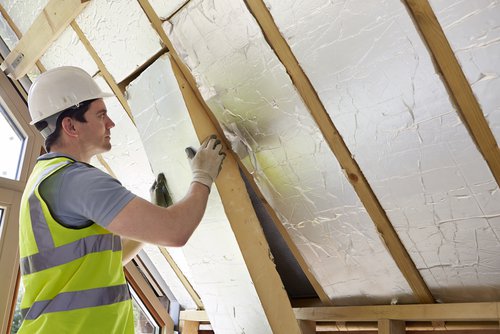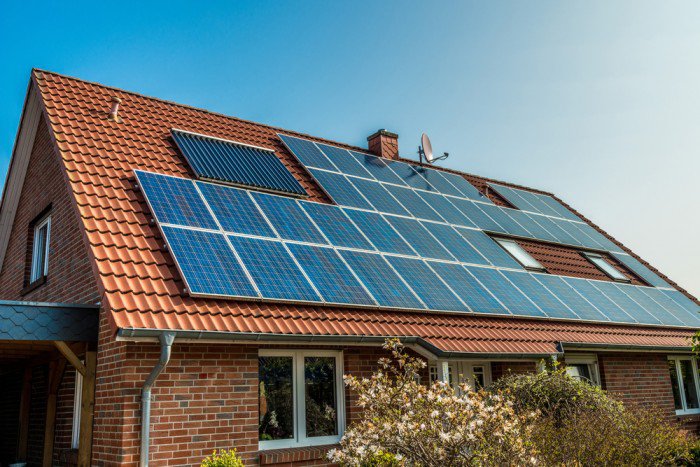Friday, 09/01/2026 | 00:26 GMT+7
The average homeowner spends more than $100 a month on energy bills, according to the U.S. Energy Information Administration.
Most people know to turn down the thermostat and shut off lights to save money and energy, but there are other simple and affordable solutions you can make around your home to cut costs and become more environmentally friendly.
Add Insulation

Even if you monitor and cut down on your energy use, you could be losing a large percentage of your heating and cooling through poorly insulated walls, windows and roofs. Much of air loss happens in the attic, so check for cracks and holes and fill the spaces with weather stripping or foam. Also check for lost air around baseboards, window panes, electrical outlets and pipes and wires.
Use Energy-Efficient Lighting
It may seem like a small change, but switching outdated incandescent and fluorescent light bulbs with high-efficiency LED and CFL light bulbs can make a big difference. Energy Star reports that CFL lights use about 70 percent less energy and last up to 10 times longer than standard incandescent bulbs, which only convert about 10 percent of energy used into light. LED lights are even more efficient, lasting more than 20 years in some cases and saving 75 percent or more on energy costs than regular bulbs. Changing your bulbs, even a few at a time, is an easy upgrade that saves you a lot of money in the long run.
Use Solar Power

Solar power is a well-known clean energy solution that reduces your carbon footprint and saves you big money. Compared to regular electricity costs, the national average savings with solar over 20 years is more than $20,000, CleanTechnica reports. While solar is a great way to use clean energy, it can be costly to install. Luckily, there are affordable ways to save with solar energy as well.
Community solar (or “roofless” solar) is an arrangement where you can purchase panels in a shared solar array, and receive the same financial benefits as if the panels were installed on your roof or property. Roofless solar programs are ideal for those who rent their homes or commercial space and don’t have the ability to modify their rooftops.
Purchasing panels in a shared array also enables homeowners with shaded rooftops or a roof that is slanted away from the sun to go solar and reduce their carbon impact.
Upgrade Toilets, Faucets and Showers
Toilets account for approximately 30 percent of a home’s indoor water use, theEPA reports. Upgrading your toilet systems can save up to 20 to 60 percent of water consumption and more than $100 per year in costs. In addition to low-flow toilets, update your bathroom and kitchen faucets as well as shower heads and other water features to low-flow models. Also check for leaks and water loss around pipes and water fixtures.
Do More Than Turn Off Electronics
Turning off lights, TVs and appliances when not in use is helpful — but go one step further and unplug them as well. According to Energy.gov, some electronics still suck power when left plugged in. You could also use power strips and turn those off when not in use, which will cut off the power. And consider upgrading your electronics and appliances to Energy Star-labeled products, which reduce your energy bills by up to 75 percent.
The Green Optimistics








 Webinar 2: “Financial Support for Energy Efficiency Enterprises – Opportunities and Challenges”
Webinar 2: “Financial Support for Energy Efficiency Enterprises – Opportunities and Challenges”
 Vietnamese enterprises achieve green growth and cut costs through energy efficiency
Vietnamese enterprises achieve green growth and cut costs through energy efficiency
 Capacity building for participating financial institutions in Ho Chi Minh City
Capacity building for participating financial institutions in Ho Chi Minh City
 Strengthening capacity for energy management officers of local government agencies
Strengthening capacity for energy management officers of local government agencies
 Steel Enterprises Saving Energy and Enhancing Competitiveness
Steel Enterprises Saving Energy and Enhancing Competitiveness
 Strengthening Sales and Marketing Capacity for Energy Efficiency Equipment and Solution Suppliers
Strengthening Sales and Marketing Capacity for Energy Efficiency Equipment and Solution Suppliers
 Capacity Building for Energy Officers of Government Agencies in the Central region
Capacity Building for Energy Officers of Government Agencies in the Central region